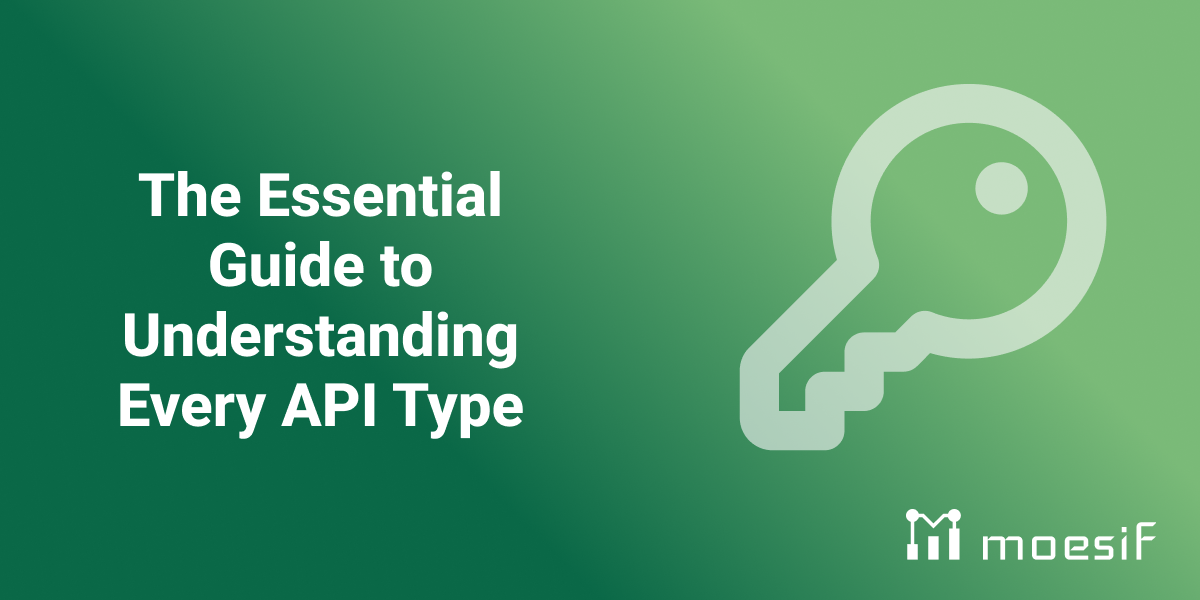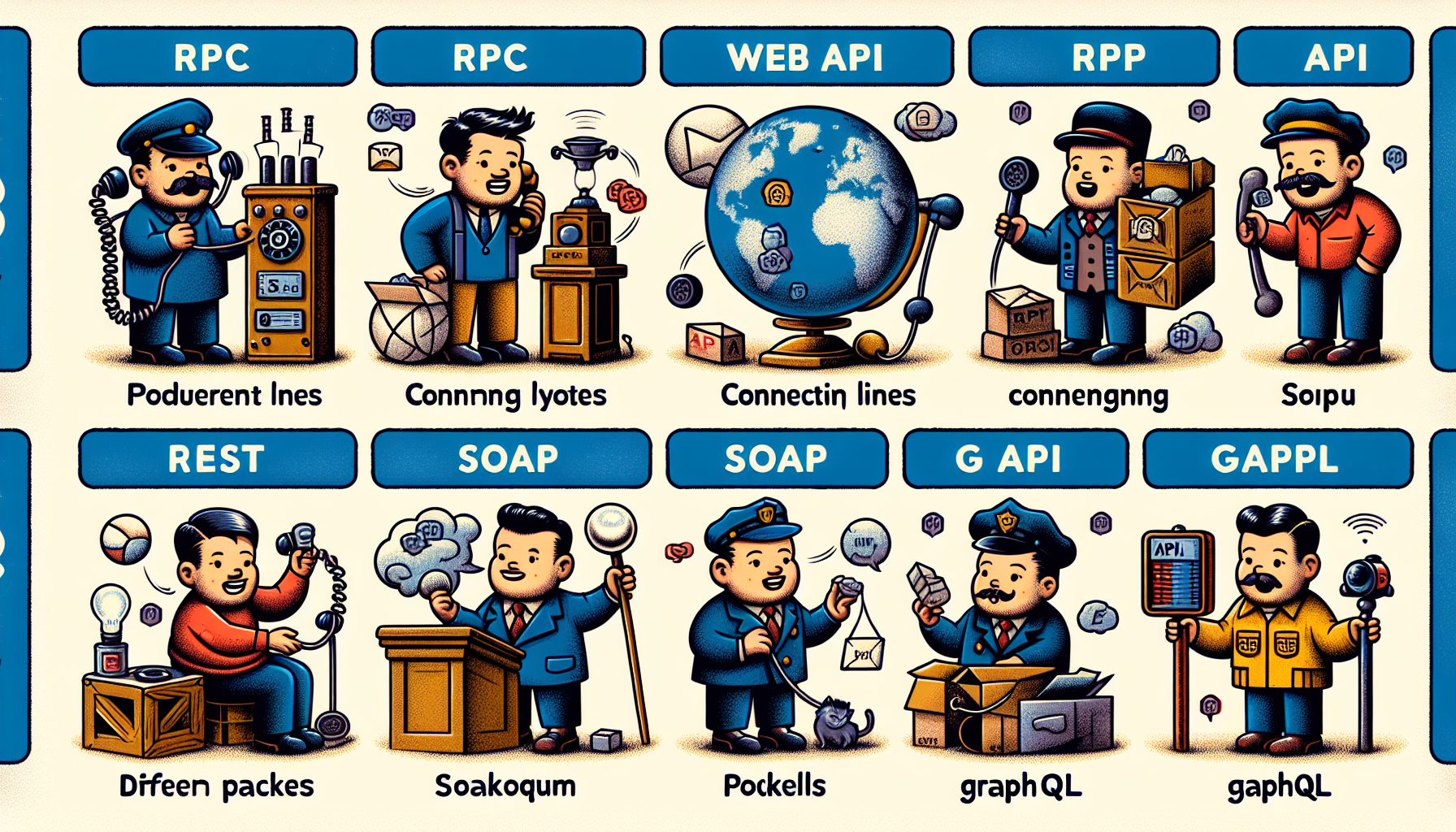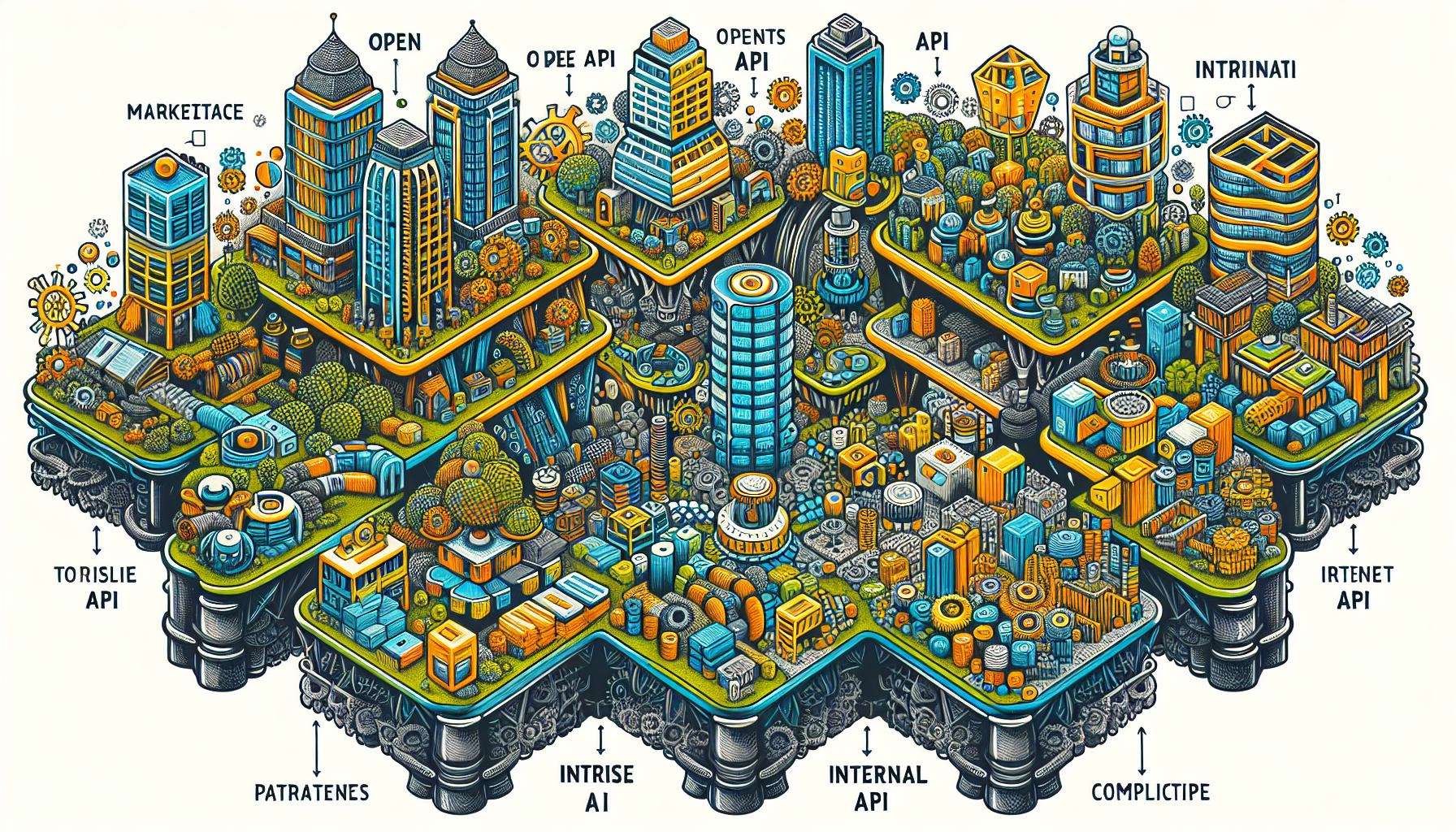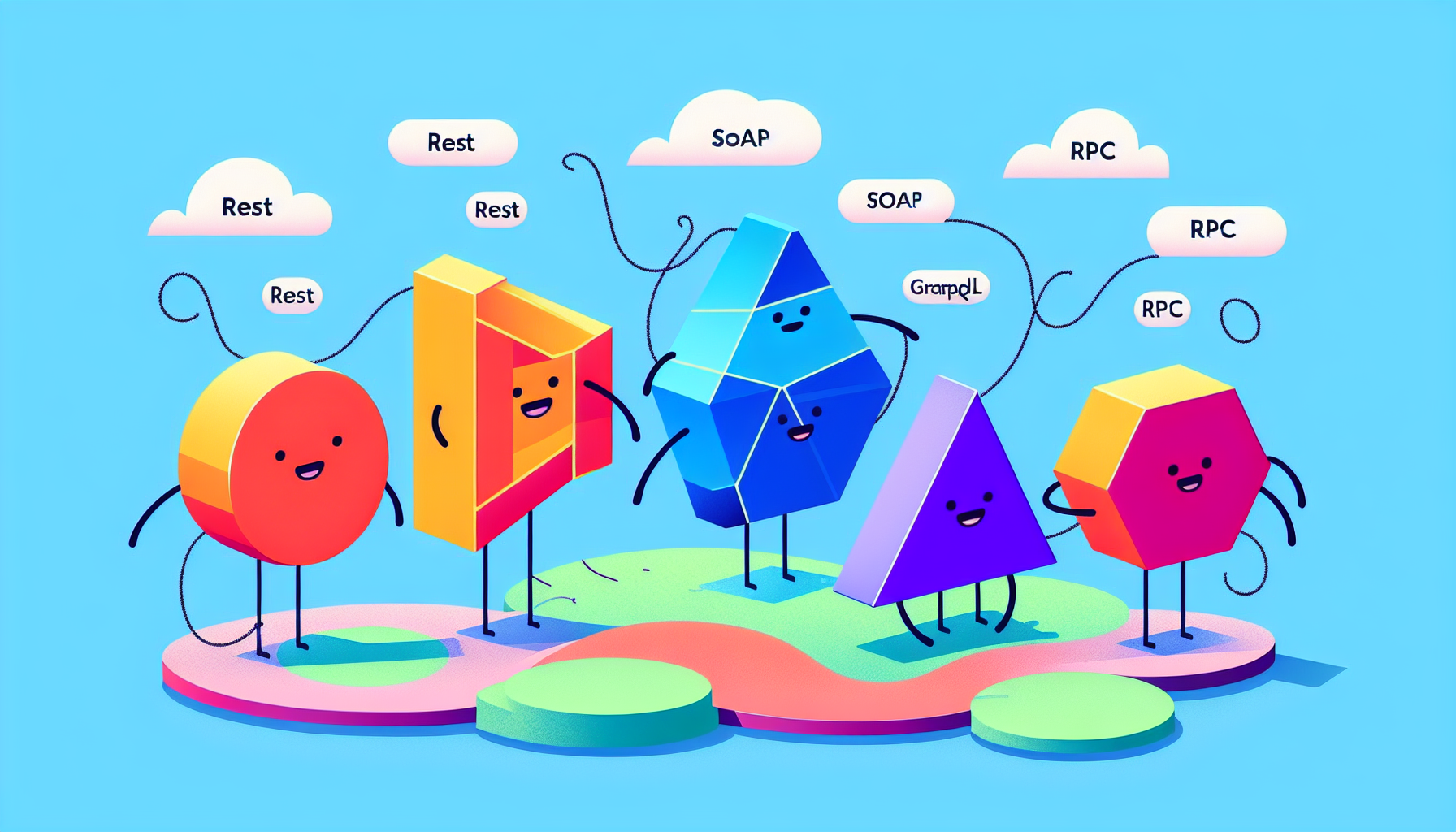The Essential Guide to Understanding Every API Type

APIs, or application programming interfaces, allow different software systems to communicate. But different types of APIs exist. Each type serves a different purpose. And each type has its own pros, cons, and use cases.
This article breaks down the main API categories—open, partner, internal, and composite. We also discuss the types of APIs based on the protocols they use. At the end of this article, you can confidently choose the right one for your needs.
Key Takeaways
- APIs facilitate seamless communication between software applications and platforms. We can broadly categorize them into public, partner, internal, and composite APIs. They each serve distinct purposes and audiences.
- The choice of API protocols, including REST, SOAP, GraphQL, and RPC, significantly impacts API design and performance. RESTful APIs remain the most commonly used due to its simplicity and flexibility.
- We observe AI, machine learning APIs, and event-driven APIs as the emerging trends in API development. These new technologies possess the potential to revolutionize the digital landscape by enhancing operational capabilities and facilitating real-time data processing.

The Essential Guide to Understanding Every API Type

APIs come in various forms, each with a unique architecture and purpose. These are the primary types of APIs:
- Open APIs
- Partner APIs
- Internal APIs
- Composite APIs
Think of them as different languages with their own syntax and usage rules. Their design promotes integration and interoperability of diverse applications and use cases.
Mastering these different API types and protocols compares to being multilingual or polyglot in software development. Knowledge about these different types of APIs allows developers to construct more robust and efficient applications across different industries.
Introduction
APIs serve as a crucial component in modern technology. They facilitate communication and feature access between different applications without the need to comprehend the underlying code. They enable software systems to easily interact, fostering new features and capabilities. APIs act as interpreters between different programs, connecting services through endpoints and relaying messages, making software integration seamless.
This guide aims to provide a deep look into the most common API types and protocols, helping you choose the right API and understand how these essential elements shape our digital landscape.
Types of APIs and Their Uses

APIs act as bridges between applications, facilitating information transfer and service delivery across various platforms. They allow developers to add features to software using other developers’ APIs, without reinventing the wheel and repeating tasks. Based on only the standard, protocol, and nature of an API, developers can choose from battle-tested, industry-standard, and efficient solutions that already exist for their use cases. This speeds up integration, eliminates resource waste, and concerns for breakage or incompatibility.
We can categorize APIs into four main types:
- Public APIs
- Partner APIs
- Internal APIs
- Composite APIs
Grasping these different types of APIs and protocols gives you a blueprint for constructing more robust and efficient applications, with each type fulfilling different functions and serving distinct audiences.
Open APIs
Open APIs, also referred to as public or external APIs, operate as the public interface of applications. They act as an open invitation to developers and businesses to use services freely. For example:
- Access and integrate application data.
- Preserve proprietary ownership.
- Fuel innovation and collaboration.
- Make both the third-party software and the API more valuable.
The company Waze demonstrates the use of open APIs. The company utilizes public APIs from municipalities and other partners to obtain information about road closures, accidents, and construction delays. A rich ecosystem of open APIs exists for almost every use case, powering many digital products and services.
The OpenAPI standard offers guidelines for endpoint naming conventions, data formats, and error messaging. The standard provides API producers and manufacturers with access to various tools for quickly setting up mock servers and creating high-quality documentation.
Partner APIs
Partner APIs function as unique keys that open avenues for business-to-business (B2B) collaborations. These APIs enable organizations to securely access data and services across businesses, streamlining business processes, and enhancing customer experiences.
For example, a company’s HR team can access a partner API from a payroll provider to access data about their own employees.
Companies share partner APIs externally but limit them to authorized clients, often involving stronger security measures. Partner APIs empower businesses with different capabilities:
- Creating unique features.
- Reducing costs.
- Allocating time more efficiently.
- Driving revenue growth.
In this way, partner APIs have become a valuable asset in the business world.
Internal APIs
Imagine a bustling city with an intricate network of roads and highways connecting different neighborhoods. Now imagine these neighborhoods as different systems within an organization, and the roads as internal APIs. Internal APIs facilitate communication and data sharing within an organization, much like how roads enable people and goods to move around a city.
Companies build these APIs to use them across internal development teams and closed groups. Internal APIs remain hidden from external users. When someone in the company wants to access an internal API, they typically require an explicit permission and authorization. Internal APIs allow companies to securely communicate, collaborate, and share across internal teams. Oftentimes, these APIs power a lot of the process automation in marketing, product, and software development teams.
Despite their internal nature, these APIs are efficient, secure, and traceable, making them a crucial and reliable component in an organization’s digital infrastructure.
Composite APIs
Composite APIs serve multiple functions in the API realm. They combine multiple API requests into a single call, reducing the number of round trips to the server and improving performance. By using a composite API, developers can streamline their processes and enhance the overall user experience.
A composite API consolidates various APIs into a single interface. This allows developers to access data from multiple sources through a unified view. In a microservices architecture pattern, composite API brings significant value when multiple services’ information becomes necessary to complete a task. This makes them an essential tool for efficient system communication.
By simplifying data access and utilization, composite APIs ease interactions with complex applications and streamline the development process.
Common API Protocols

API protocols function like traffic regulations, overseeing the interactions between two parties utilizing an API. They define rules for API calls and specify valid data types and commands, ensuring consistent and reliable performance. The protocol you choose for an API significantly impacts its design, construction, and maintenance requirements.
This section delves into the most common types of API architectures, including REST, SOAP, and RPC.
REST APIs
REST, an acronym for representational state transfer, is an architectural style that underpins modern web applications such as Netflix, Uber, and Amazon. An API that implements this style becomes a REST API or RESTful API. A REST API uses a client-server architecture, with the API interface remaining on the client side, separate from the server’s data.
REST APIs transfer data from a server to a requesting client. The following list points out some fundamental properties of a REST API:
- Stateless, meaning each request is independent and unrelated to others.
- Simple and flexible, making the use of a REST API quite convenient.
- Platform-agnostic, allowing for data delivery across different platforms.
- Quick and secure in transferring data.
These features make REST APIs the most commonly used API protocol.
SOAP APIs
SOAP, standing for simple object access protocol, operates like a diplomatic courier in the realm of APIs. A SOAP API uses XML messages for communication. Enterprise applications often employ SOAP APIs due to their robust security.
SOAP APIs have the following features:
- They can communicate over multiple internet communication protocols, not just HTTP.
- They require metadata files to describe requests, making exchanges more predictable.
- They have strong security measures and compliance with critical standards.
- They don’t adhere to any specific protocol, making them ideal for complex enterprise-level applications.
GraphQL APIs
GraphQL APIs function like personal shoppers, delivering precisely what clients require. Unlike traditional REST APIs, which require multiple endpoints for different data fetches, GraphQL operates through a single endpoint. This removes the hassle of correlating endpoints with requirements. Clients can use HTTP requests to a single GraphQL API endpoint asking for specific data structures. This allows users to tailor requests to their needs.
GraphQL offers several key strengths, such as minimizing over-fetching and under-fetching of data, flexibility in querying data, and efficient data aggregation. These features streamline the development process, making it well-suited for applications with complex data requirements.
See our comprehensive blog post to better understand the differences between GraphQL and REST.
RPC APIs
Remote procedure call, or RPC APIs, are the preferred option for executing remote functions between various machines. They facilitate communication between various processes by allowing one program to execute procedures on another system.
RPC APIs can use either JSON, known as the JSON-RPC protocol, or XML, known as the XML-RPC protocol. Both formats are commonly used for remote procedure calls. Companies often utilize RPC APIs for building distributed systems and client-server architectures, as well as in other scenarios where various components require network communication.
Web APIs and Their Applications

Web APIs function as digital connectors, facilitating seamless integration and real-time data transmission between web applications and web services. They play a pivotal role in everyday experiences. From social media interactions to real-time weather data access, we utilize web APIs in various forms such as public, private, and social media APIs.
Public APIs
Web APIs can also be public APIs. We also know them as external or open APIs. They operate like the public libraries of the digital world. Accessible to any developer or business, they facilitate application and data sharing across various platforms and web services.
Public APIs power a multitude of functionalities in our digital lives. Some examples of public APIs include the following:
- Embedding YouTube videos on websites.
- Third-party login systems that authenticate users.
- Weather APIs that provide real-time weather data.
- Payment gateway APIs that enable online transactions.
- Social media APIs that allow sharing and posting on social platforms.
Private APIs
Private web APIs, also referred to as internal or closed APIs, operate like a company’s private network. They have restricted and controlled usage within a specific organization. Only authorized users can access them. These APIs ensure secure communication and data sharing among users. Since private APIs power internal workflows, they are essential for maintaining the integrity and security of an organization’s digital platform.
Social Media APIs
Social media APIs enable developers to incorporate social media functionalities into their applications. They power various digital experiences. For example, integration of Facebook information into websites, social media bots that respond to events on platforms like Twitter and Reddit, and so on.
They enhance user experiences, drive engagement, and play a significant role in shaping our digital social interactions. For example, in digital marketing and online businesses, these APIs foster growth, better customer services, and consistent user experiences.
Choosing the Right API for Your Needs
Selecting the appropriate API influences how effectively you can perform the task at hand. Therefore, when selecting an API, consider factors such as:
- Functionality
- Documentation
- Scalability
- Security
The strategic adoption of APIs can significantly enhance business operations and market competitiveness, leading to a market capitalization growth of 12.9% compared to companies that do not use APIs.
Factors to Consider
When selecting an API, comprehensive documentation and user-friendliness are as critical as a GPS on a road trip. They guide you through the journey, ensuring you reach your destination without unnecessary detours. Scalability is another crucial aspect, as it impacts how well an API handles increasing demand and scales resources dynamically.
Robust security measures, including strong authentication mechanisms and encryption protocols, are also vital for ensuring API reliability.
Case Studies
Real-world examples provide valuable insights into the power of APIs. Commerzbank, for instance, have utilized APIs to transform its operations, achieving a milestone of 1 billion calls per month and unlocking new possibilities for business growth. Similarly, Robert W. Baird & Co. has leveraged internal APIs to gain ready access to underlying data, delivering valuable analytics insights to their customers. These examples demonstrate the transformative potential of APIs when you choose and implement them strategically.
API Request Methods

API request methods constitute the syntax of API language. They define how a client app can interact with online systems, enabling developers to access and manipulate data and functionality from remote sources.
The most basic request methods are the following:
- GET
- POST
- PUT
- PATCH
- DELETE
GET
The GET method functions like a detective among API request methods. It retrieves information and data from a server, enabling clients to access specific resources. GET requests have the following characteristics:
- They maintain idempotency, meaning that multiple identical requests has the same effect as a single request.
- They do not have a request body.
- Server or intermediary cache systems can cache them for faster response times and to reduce load.
- You can bookmark and share them.
- They should not have any side effects on the server.
POST
The POST method operates like a courier, delivering data packages to the server. It submits data to be processed to a specified resource, resulting in resource creation or updates on the server.
Unlike GET requests, POST requests are not idempotent, meaning repeated requests may have different effects.
PUT and DELETE
The PUT and DELETE methods function as the renovators and cleaners in the API realm. The PUT method updates a specified resource with new data, while the DELETE method removes a specified resource. Both methods play a crucial role in maintaining the freshness and relevance of data in an application.
Future Trends in API Development
APIs evolve alongside technology. Future trends in API development indicate a rising use of AI, machine learning APIs, and event-driven APIs.
By 2026, over 80% of enterprises are predicted to employ generative AI APIs or applications, highlighting the growing significance of these APIs in the digital landscape.
AI and Machine Learning APIs
We are in the midst of an AI revolution, with APIs leading the charge. AI APIs saw a remarkable growth of 96% in 2023, underscoring their growing importance in the digital world. Generative AI applications, particularly in text and image generation, are expected to continue growing in popularity, playing a crucial role in business advancements and enhancing operational capabilities.
As AI continues to advance, so does the need for efficient training of machine learning models. Specialized accelerator chips for machine learning inference are expected to see continued investments from major cloud providers like Azure, AWS, and GCP in 2024. These advancements highlight how AI and machine learning APIs are set to transform the digital landscape in the coming years.
Event-Driven APIs
Event-driven APIs function like news reporters in the API world, providing real-time updates and information. They are becoming increasingly vital for real-time data processing and effectively managing IoT applications. Popular event-driven API interaction patterns include webhooks, WebSocket, and streaming, showcasing the diverse ways APIs can facilitate real-time data transmission.
Summary
APIs are the unsung heroes of our digital world, seamlessly connecting different software applications and facilitating data exchange. Understanding different API types and protocols is like unlocking a treasure trove of possibilities, enabling developers to build more robust and effective applications. As technology continues to evolve, so will APIs, opening up new avenues for innovation and growth. Remember, the key to making the most of APIs lies in choosing the right one for your specific needs and leveraging it effectively to drive business growth.
Summary
If we look at the foundation of today’s digital infrastructure, we can see how APIs have become a critical component of that foundation. They seamlessly connect different software applications and facilitate data exchange. Understanding different API types and protocols unlocks a treasure trove of possibilities, enabling developers to build more robust and effective applications. As technology continues to evolve, so will APIs, opening up new avenues for innovation and growth. Remember, the key to making the most of APIs lies in choosing the right one for your specific needs and leveraging it effectively to drive business growth.
To that purpose, consider adding Moesif to your stack of tools. Moesif comes with a comprehensive set of API analytics and monitoring tools that can help you understand your API early on. And if you want to monetize your API, Moesif has you covered with powerful monetization tools that work seamlessly across different billing providers. Sign up today for a free trial, no credit card required.







